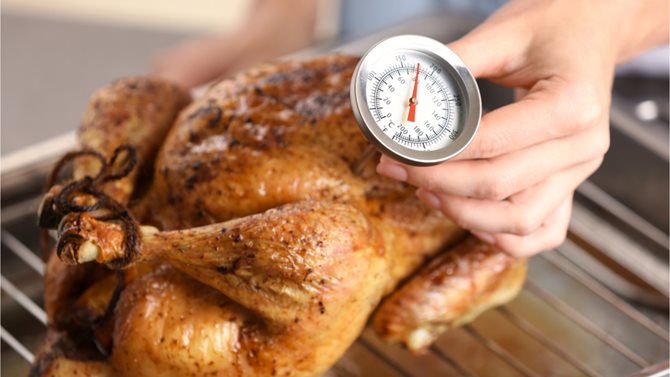Assessment of the Use of Meat Thermometers by Consumers on the Island of Ireland

- Project start date: 1 March 2019
- Project status: Completed
- Project type: Food safety
- Discipline: Microbiology and food hygiene
- Author/s: Dr Lynsey Hollywood, Ulster University
Research objective
The primary objective of this research was to investigate current perceptions and trends in the use of meat thermometers by consumers on the island of Ireland (IoI). It aimed to assess behaviours and attitudes towards meat thermometers and their reported usage. To achieve these objectives, the project conducted a rapid review, focus groups, and a consumer survey. The study aimed to provide insights into the barriers and motivators for meat thermometer use and to offer recommendations for increasing their adoption to ensure safe cooking practices.
Outputs
Research report
- Title: Meat thermometers and consumers
- Publication date: 16 March 2021
- Summary: This research looked at meat thermometer use among consumers on the island of Ireland (IoI), assessing behaviours, attitudes, and trends to identify barriers and motivators. It included a rapid review, focus groups, and a consumer survey to provide insights and recommendations for promoting safe cooking practices.
- Findings:
Rapid review
- Reviewed 44 papers from academic and grey literature.
- Meat thermometer use increased in the USA and Canada from 49% in 1998 to 70% in 2010 due to targeted campaigns.
- European studies showed much lower usage: 2-5% in the UK and RoI, and 0.8-11% in mainland Europe.
Focus groups
- 65 participants (50 female; 15 male) from various locations across IoI.
- Common practice for checking meat doneness: no pink meat and clear juices, especially for poultry.
- Motivators for using meat thermometers: social responsibility, meat quality, ease of use, free distribution.
- Barriers: perceived expense, lack of domestic exposure, maintenance concerns, kitchen clutter, perceived user experience level.
- Sources of meat safety information: family, butchers, recipes, internet, Home Economics classes, TV.
Consumer survey
- Surveyed 1,052 individuals across IoI.
- 15.7% (165) used meat thermometers; 17.4% (183) owned them, indicating a small ownership-usage gap.
- Most (86.5%) were in the pre-contemplation stage of behavioural change.
- Poor understanding of proper insertion methods (21.4% accuracy for burgers, 51.7% for roasts) and safe end-point temperatures (30-260℃).
- Attitude significantly predicted use for roasts and small cuts; perceived behavioural control predicted use for whole chicken.
- Subjective norms did not significantly influence usage.
Meat thermometer usage
- Low overall usage on IoI compared to the USA and Canada.
- Most common alternative method: visual checks for pink meat and clear juices.
- Barriers include cost perception, lack of exposure, maintenance, and clutter concerns.
- Motivators include quality improvement, social responsibility, ease of use, and free distribution.
Knowledge and attitudes
- Many consumers are unaware of proper usage and safe temperatures.
- Most consumers are not considering using meat thermometers.
- Belief in preventing food poisoning and ease of use are significant predictors for specific meat types.
- Recommendations:
Increase awareness
- Effectively communicate the risks of food poisoning and the benefits of meat thermometers.
- Use social media and peer networks to promote usage.
Improve education
- Provide clear instructions on packaging for proper thermometer use.
- Educate consumers on accurate insertion methods and safe temperatures.
Address barriers
- Counter perceptions of expense and maintenance issues.
- Distribute meat thermometers without cost to increase exposure.
Leverage motivators
- Highlight the quality improvement aspect of using thermometers.
- Emphasise social responsibility in food safety.
Utilise media and peer Influence
- Engage influencers and food safety campaigns to promote meat thermometer use.
- Encourage meat producers to include usage recommendations on packaging.
Similar research
- Portion control tools - Do they work in practice? (2019)
- Prepared convenience foods and associated food safety risks (2019)
- Weaning practices on the island of Ireland (2016)
- Managing food on shift work (2014)
- The impact of cooking and related food skills on healthiness of diets (2014)
- Consumer understanding of food portion sizes (2010)
- Early school leavers: a needs assessment from a nutrition perspective (2010)




